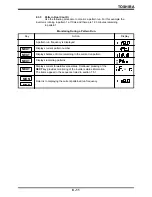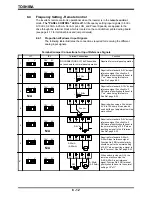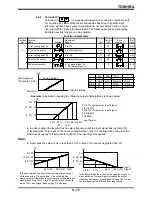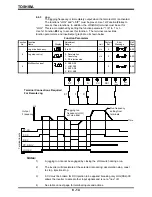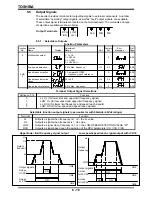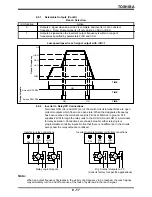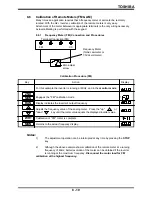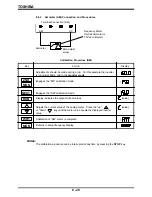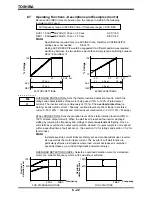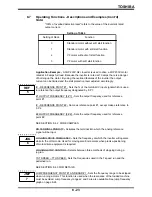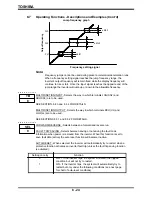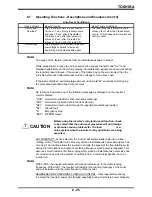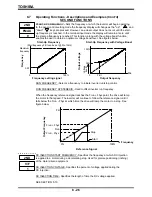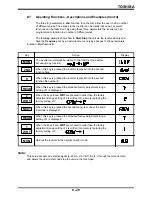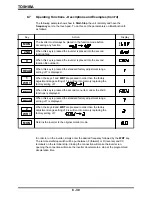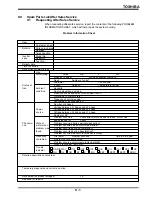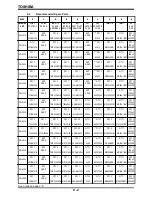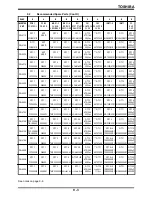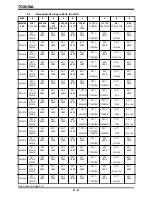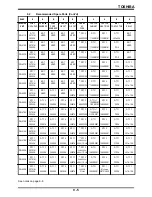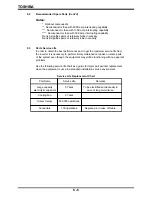
TOSHIBA
8.7
Operating Functions - Descriptions and Examples (Cont'd)
Frequency setting signal
FJ3
FJ2
FJ1
±bfJ1
±bfJ2
±bfJ3
8 - 24
Jump frequency graph
Output frequency
8
TB
9
SEL
Note:
Frequency jumps cannot be used during preset acceleration/deceleration runs.
When a frequency setting signal reaches the jump frequency range, the
inverter's output frequency will remain fixed while the display frequency will
continue to rise or fall. Once the input signal reaches the opposite end of the
jump range the inverter will jump up or down to the allowable frequency.
MULTIFUNCTION INPUT - Selects the way in which terminals JOG(SS2) and
AD2(SS3) are to be used.
SEE SECTION 8.4.3 and 8.4.4 FOR DETAILS.
MULTIFUNCTION OUTPUT - Selects the way in which terminals RCH(UL) and
LOW(LL) are to be used.
SEE SECTIONS 8.5.1 and 8.5.2 FOR DETAILS.
FORWARD/REVERSE - Selects between a forward and reverse run.
FAULT TRIP SAVING - Selects between saving or not saving the fault code
information when power is removed from the inverter. When this function is set to
save fault data (active) the auto reset function will become inactive.
AUTO-RESET - When selected, the inverter will automatically try to restart when a
protective function activates an inverter fault trip (unless the fault trip saving function
is activated).
Setting on retry
Function
0
OFF - If the inverter trips, the system will retain the tripped
condition but will not try to restart.
1
ON - If the inverter trips, the system will automatically try to
restart but only under the following conditions (see next page
for chart of auto-reset conditions).
Summary of Contents for TOSVERT-130G2+
Page 112: ...TOSHIBA 10 6 Schematics 10 17 ...


